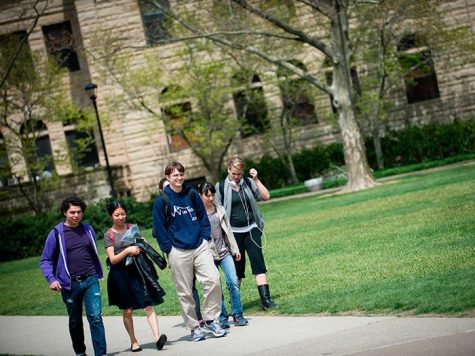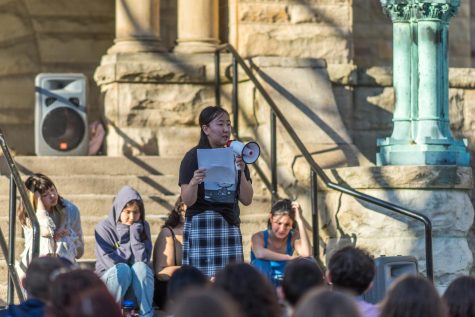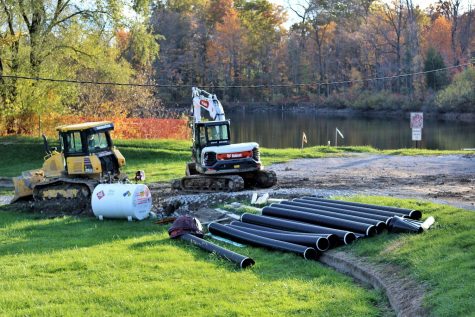Sidewalks, Social Justice Discussed in State of the City Address
City Council President Bryan Burgess and City Manager Rob Hillard addressed past successes, such as improvements in city services, public works, social justice, and energy sustainability, as well as challenges and future projects in Oberlin’s State of the City address last Thursday. Burgess also gave the attendees an update on construction of the NEXUS pipeline, which he said will inevitably be built, despite local activists’ best efforts.
For several years, the city has engaged in litigation aimed at rerouting the NEXUS pipeline, which in recent months has become the subject of several protests in the community. However, since a federal judge ruled in favor of NEXUS in December, Burgess said construction is expected to begin by late April.
“Once they arrive they’ll be here for about two months,” Burgess said. “We’re talking hundreds of workers [and] big earth-moving machines installing a pipe within stone’s throw distance of houses on Reserve Avenue. It’s frustrating — so frustrating.”
The rest of Burgess and Hillard’s presentation was more optimistic in tone and focused on the city’s recent successes and upcoming projects.
One such project is the continued implementation of the Safe Routes to School grant, which provides the city with $500,000 to increase the safety of children traveling to school. Money from the grant has already been used to install bike racks, covered awnings, and more lighting on crosswalks along heavily traveled routes in the community.
“The big chunk of the money that we’re still waiting on is for the sidewalks — approximately $350,000 worth of sidewalks,” Burgess said. “Main Street, Lorain Street, and College [Street] are the main thoroughfares for children to get to school and it’s important to us to make sure they can get to school on sidewalks.”
The address also discussed the city’s Complete Streets program, which aims to make streets more accessible and navigable.
“Streets are for everybody,” Burgess added. “We expect when a street is designed it will provide access for vehicles, pedestrians, and bicyclists.”
Vice President of City Council Linda Slocum agreed that developing a more connected infrastructure in Oberlin is an important goal for the city.
“We’re trying to make Oberlin a bikeable, walkable community,” she said. “I also want to connect more to neighborhoods. It’s important to me to involve neighbors in deciding where they want the sidewalks to be, in more of a down-up process.”
Councilmember Kristin Peterson agreed, noting the deterioration of some of the city’s roads and water lines should be prioritized.
“I look forward to continued progress on infrastructure — road repairs and maintenance and water line replacement,” Peterson said. Also, close monitoring of right of way legislation and its impact on the city’s utility poles.”
The State of the City presentation reflected on some of the city’s accomplishments from the past few years. Since residents voted to increase the income tax rate to 2.5 percent in 2014, the city’s financial state has become more stable.
The city also achieved over 85 percent carbon-neutral power recently. Burgess added that we have some of the lowest electricity rates in the state of Ohio and the lowest in Lorain County. The city also hopes to implement a climate action plan this summer with the goal of complete carbon neutrality by 2050.
Other highlights include the passage of laws and regulations that reaffirm the city’s commitment to social justice. These include replacing Columbus Day with Indigenous Peoples Day, raising the minimum wage for municipal employees, increasing protections for LGBTQ people, and protecting individuals affected by the Deferred Action for Childhood Arrivals program.
Burgess acknowledged the responsibility that comes with Oberlin’s reputation and renown.
“Oberlin has this knack of making national headlines,” he said. “We’re a town of 8,000 people. We have an impact on the rest of the nation that I don’t think we realize.”







